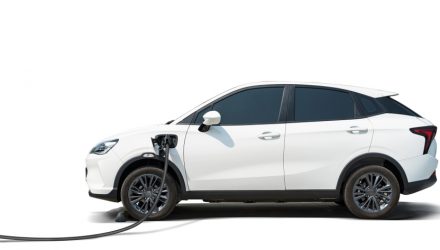The electric vehicle (EV) industry is maturing. Part of that maturation process is following some of the playbook laid out by the traditional automotive industry. That includes deploying price cuts and incentives as customer acquisition tools.
There’s a balancing act between price cuts and profitability — something many EV makers excluding BYD and Tesla have struggled to attain. But it’s possible that increased affordability could lure more buyers to the market. Should that strategy prove fruitful, it could bring with it positive implications for assets such as the KraneShares Electric Vehicles and Future Mobility ETF (KARS).
The fund, which tracks the Bloomberg Electric Vehicles Index, turns six years old next month. KARS endured a rough 2023. But there are signs of budding momentum. That’s because the ETF is higher by 2.13% over the past month. That recent bullishness could the set the stage for better things in 2024. That’s particularly so if EV price reductions bear fruit for manufacturers.
EV Pricing Is Pertinent
For years, investors have heard the thesis that for EVs to capture a greater share of the global automotive market, pricing parity with internal combustion engine rivals is essential. Some KARS member firms may achieve that parity before others. But the fund’s OEM holdings can leverage favorable pricing to entice prospective buyers.
“To stoke demand, automakers have slashed prices while offering generous lease terms or cash rebates in recent months. Tesla — the only carmaker with a profitable EV business — cut the prices on some of its models and trims by more than 20% in the last year alone,” reported Mike Winters for CNBC. “It’s a similar story with used EVs. The average price on a used EV was 33.7% cheaper in October 2023 when compared to October 2022, according to a recent study by iSeeCars.
OEMs Can Effectively Leverage Price Reductions
EV market experts widely believe this year’s trend of price paring will continue and potentially expand in 2024. Specific to KARS components Tesla and BYD, which combine for about 7.5% of the ETF’s roster, those OEMs can effectively leverage price reductions because they’re profitable and have strong brand recognition. For some smaller EV manufacturers, it’s possible that price cuts weigh on efforts to stem losses, but those moves could also serve long-term objectives of bolstering top-line growth and market share.
Regarding revenue and market share, it is clear that EV share of critical automotive markets — namely China, Europe and the U.S. — is increasing, potentially auguring well for KARS over the long haul.
“With the Biden administration proposing emission rules that would ensure that up to two-thirds of all vehicles sold in the U.S. would be all-electric by 2032, auto manufacturers have been ramping up production. That’s why the number of EV products is expected to double by 2027, per Cox Automotive,” added CNBC.
For more news, information, and analysis, visit the Climate Insights Channel.

